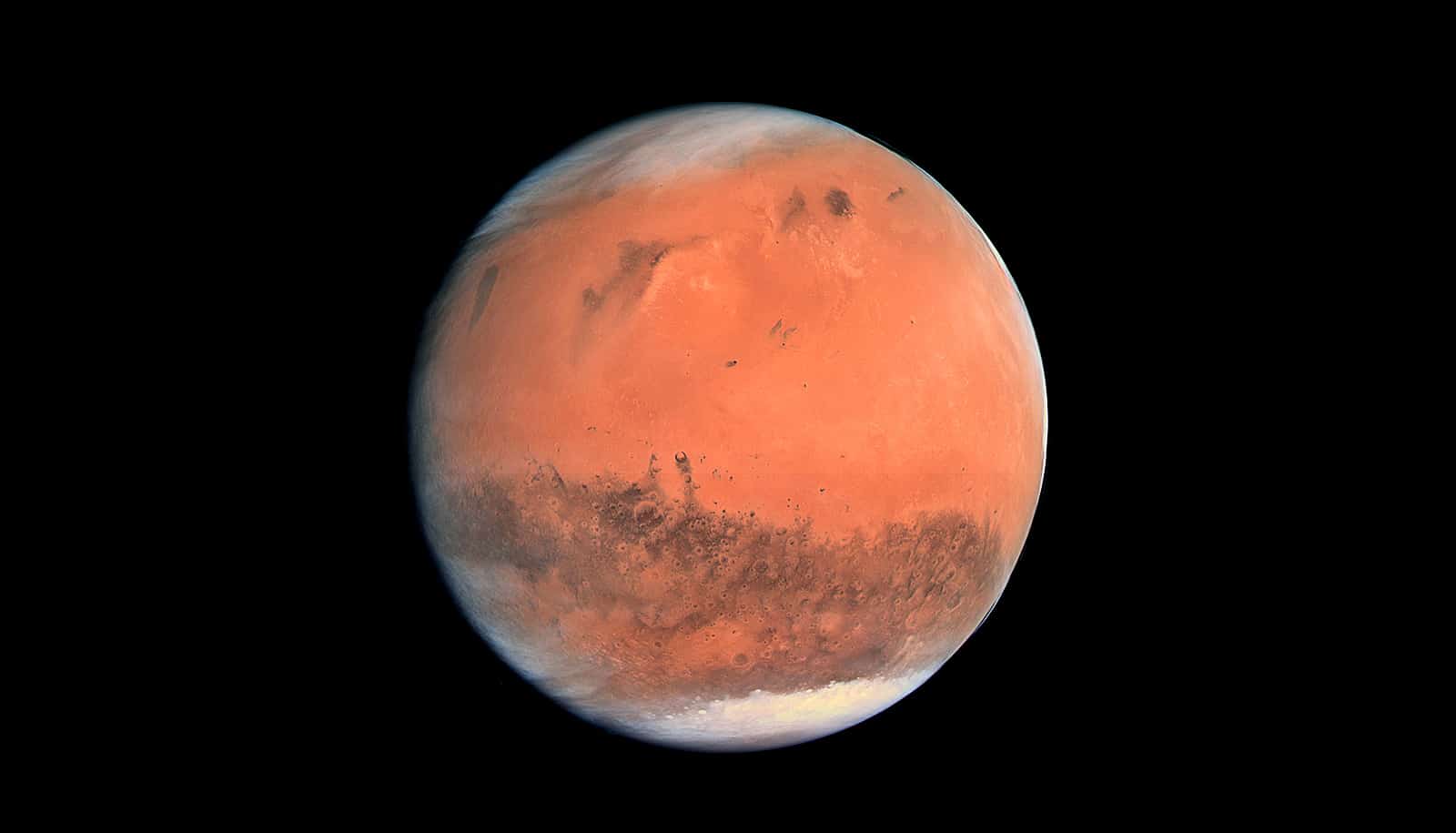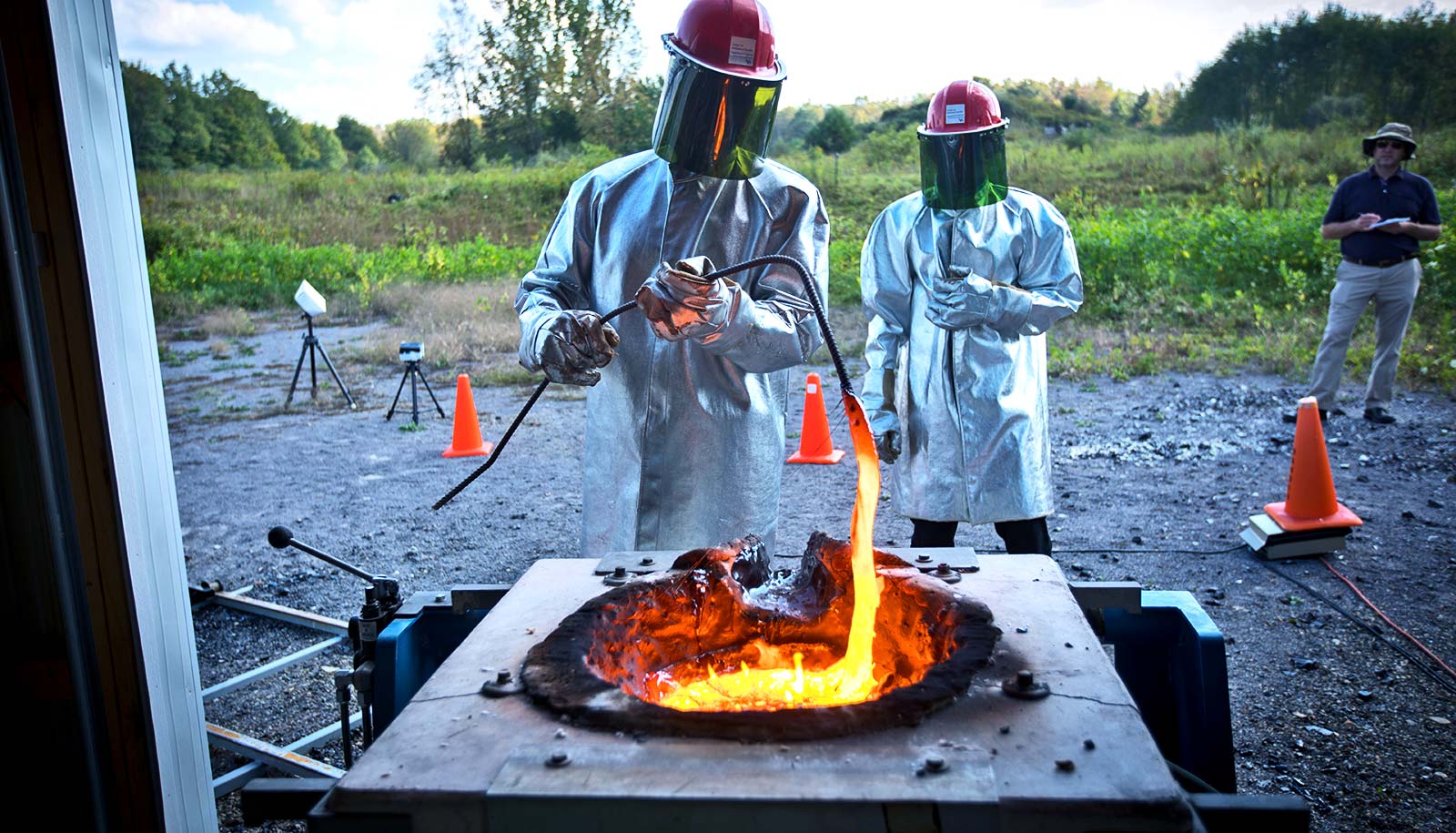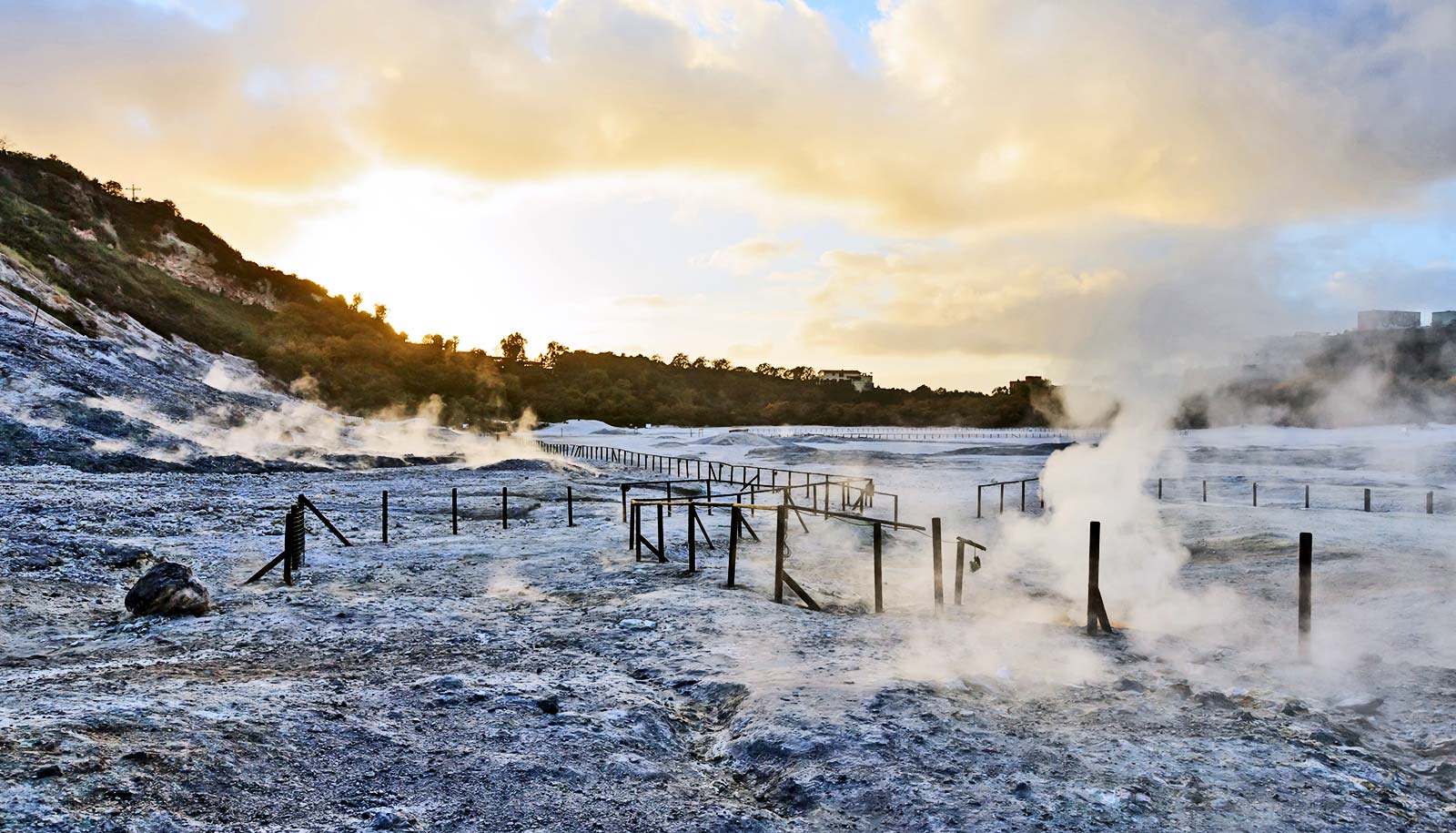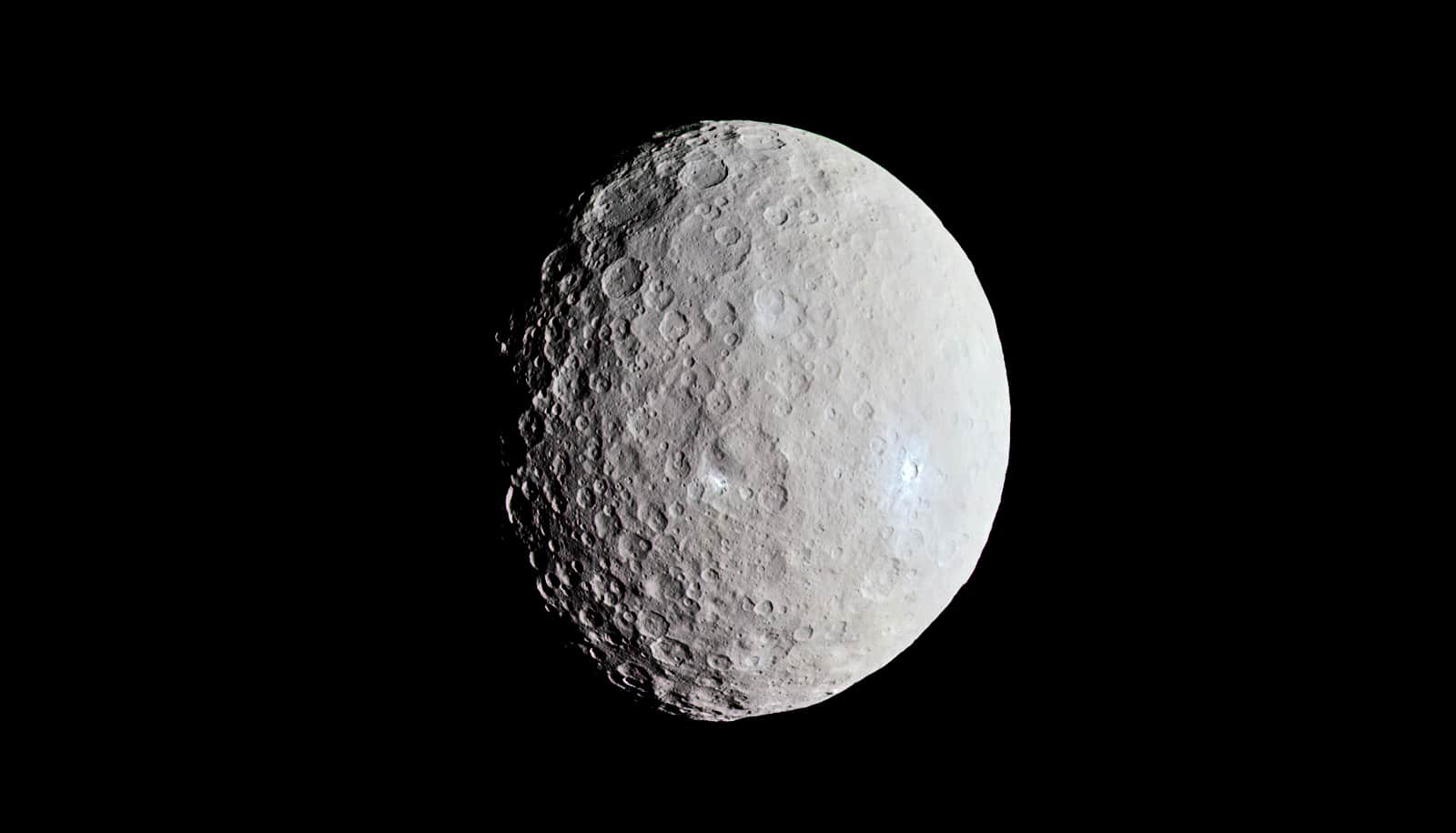A magma chamber must have formed under the surface of Mars in the past few hundred thousand years in order for there to be enough heat to produce liquid water underneath its thick ice cap, new research suggests.
A study from last year suggested liquid water is present beneath the south polar ice cap of Mars. The new research doesn’t take sides as to whether the liquid water exists. Instead, the authors suggest that there must’ve been recent magmatic activity in order to produce liquid water beneath the ice cap.
On the flip side, the study’s authors argue that if there wasn’t recent magmatic activity underneath the surface of Mars, then it is unlikely liquid water exists underneath the ice cap.
“Different people may go different ways with this, and we’re really interested to see how the community reacts to it,” says Michael Sori, an associate staff scientist in the Lunar and Planetary Laboratory at the University of Arizona and co-lead author of the paper, which appears in Geophysical Research Letters.
The potential presence of recent underground magmatic activity on Mars lends weight to the idea that Mars is an active planet, geologically speaking. That notion could give scientists a better understanding of how planets evolve over time.
With the new study, researchers intend to further the debate around the possibility of liquid water on Mars. The presence of liquid water on the red planet has implications for potentially finding life outside of Earth and could also serve as a resource for future human exploration.
“We think that if there is any life, it likely has to be protected in the subsurface from the radiation,” says co-lead author Ali Bramson, a postdoctoral research associate at the Lunar and Planetary Laboratory.
“If there are still magmatic processes active today, maybe they were more common in the recent past and could supply more widespread basal melting. This could provide a more favorable environment for liquid water and thus, perhaps, life.”
Martian ice caps
Mars has two giant ice sheets at its poles, both about a mile thick. On Earth, it’s common for liquid water to be present underneath thick ice sheets, with the planet’s heat causing the ice to melt where it meets the Earth’s crust.
In a paper published last year in Science, scientists say they detected a similar phenomenon on Mars. They claimed radar observations detected evidence of liquid water at the base of Mars’ south polar ice cap; however, the study did not address how liquid water got there.
Mars is much cooler than Earth, so researchers weren’t sure what type of environment would melt the ice at the base of the ice cap. Although previous research examined if liquid water could exist at the base of Mars’ ice caps, no one has looked at the specific location where scientists claimed to have detected water.
“We thought there was a lot of room to figure out if (the liquid water) is real, what sort of environment would you need to melt the ice in the first place, what sort of temperatures would you need, what sort of geological process would you need? Because under normal conditions, it should be too cold,” Sori says.
Heat maps
In the new study, Sori and his coauthors first assumed the detection of liquid water underneath the ice cap was correct and then worked to figure out what parameters were necessary for the water to exist. They performed physical modeling of Mars to understand how much heat is coming out of the interior of the planet and if there could be enough salt at the base of the ice cap to melt the ice.
Salt lowers the melting point of ice significantly, so researchers thought that salt could have led to melting at the base of the ice cap.
The model showed salt alone would not raise the temperature high enough to melt the ice. Instead, the authors propose it’s necessary for additional heat to come from Mars’ interior.
One plausible heat source would be volcanic activity in the planet’s subsurface. The s authors argue that magma from the deep interior of Mars rose towards the planet’s surface about 300,000 years ago. It didn’t break the surface, like a volcanic eruption, but pooled in a magma chamber below the surface.
As the magma chamber cooled, it released heat that melted the ice at the base of the ice sheet. The magma chamber is still providing heat to the ice sheet to generate liquid water today.
The idea of volcanic activity on Mars isn’t new—there is a lot of evidence of volcanism on the planet’s surface. But most of the volcanic features on Mars are from millions of years ago, leading scientists to believe that volcanic activity below and above the planet’s surface stopped long ago.
The new study, however, proposes the possibility of more recent underground volcanic activity. And, according to the study’s authors, if there was volcanic activity happening hundreds of thousands of years ago, there’s a possibility it could be happening today.
“This would imply that there is still active magma chamber formation going on in the interior of Mars today, and it is not just a cold, sort of dead place, internally,” Bramson says.
Jack Holt, a professor at the at the Lunar and Planetary Laboratory, says the question of how water could exist underneath the south polar ice cap came to his mind immediately after publication of the Science paper. The new paper adds an important constraint on the possibility of water there. He says it will likely add to the debate within the planetary science community about the finding and scientists need to do more research.
“I think it was a great idea to do this type of modeling and analysis because you have to explain the water, if it’s there. It’s really a critical piece of the puzzle,” says Holt, who was not involved in the research. “The original paper just left it hanging. There could be water there, but you have to explain it, and these guys did a really nice job of saying what is required and that salt is not sufficient.”
Source: University of Arizona



